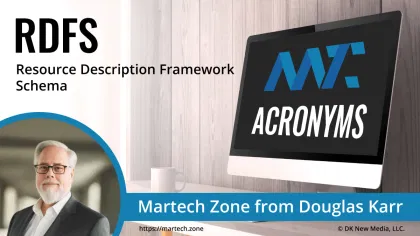
An extension of the Resource Description Framework (RDF). RDF is a standard model for data interchange on the Web, allowing for the description of resources and their relationships using a simple subject-predicate-object structure known as a triple. RDFS builds upon RDF by providing additional vocabulary and semantics for describing the structure and relationships of RDF resources. It enables the creation of simple ontologies and introduces basic concepts such as classes, properties, and hierarchies.
Key features and concepts of RDFS include:
- Classes: RDFS allows for defining classes, which are sets of resources with common characteristics. The most basic class in RDFS is rdfs:Resource, which represents anything that can be described using RDF.
- Properties: RDFS properties describe the relationships between resources or between resources and literal values. The rdf:Property class defines properties in RDFS.
- Class and property hierarchies: RDFS enables the creation of class and property hierarchies using the rdfs:subClassOf and rdfs:subPropertyOf properties. This allows for defining more specific classes and properties based on existing ones.
- Domain and range: RDFS allows for specifying the domain (the class of resources that can be the subject of a property) and the range (the class of resources or literal values that can be the object of a property) of properties using the rdfs:domain and rdfs:range properties.
- Datatypes: RDFS provides a set of built-in datatypes, such as xsd:string, xsd:integer, and xsd:date, which can specify the type of literal values associated with properties.
RDFS is a relatively simple language compared to more expressive ontology languages like OWL (Web Ontology Language). However, it provides a foundation for creating basic ontologies and is an essential part of the Semantic Web stack.
Examples of RDFS usage include:
- Defining a simple class hierarchy, such as Person as a subclass of rdfs:Resource, and Student and Teacher as subclasses of Person.
- Defining properties like hasName with a domain of Person and a range of xsd:string, or enrolledIn with a domain of Student and a range of Course.
- Describing resources using RDFS classes and properties, such as stating that a specific resource is an instance of the Student class and has the hasName property with a literal value of John Doe.
RDFS plays a crucial role in the Semantic Web by providing a way to describe the structure and relationships of RDF data, enabling more meaningful data integration and querying. It forms the basis for more expressive ontology languages like OWL, which extend RDFS with additional constructs for creating more complex and powerful ontologies.